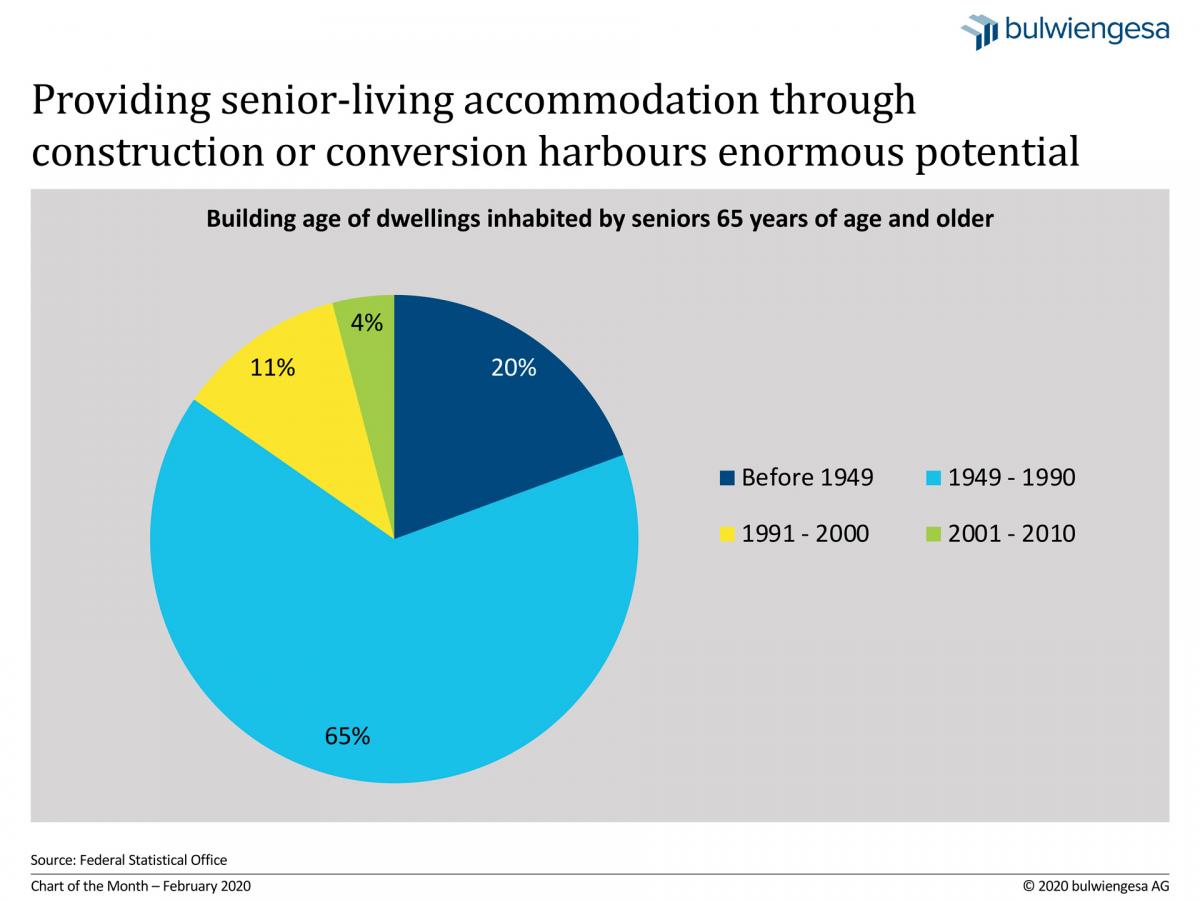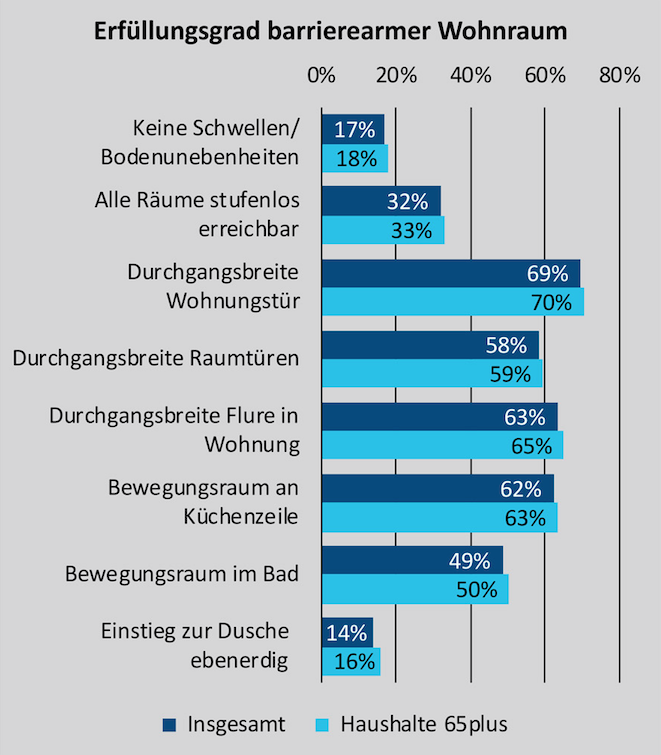February: Housing Stock too Old for the Elderly
February: Housing Stock too Old for the Elderly
Germany’s housing stock is not prepared for elderly dwellers – with barely 2.4 percent of the residential accommodation being disability-friendly. Accordingly, there is an urgent need for action. By converse argument, this represents quite an opportunity for providers of senior-living accommodation.
Many seniors, as the Chart of the Month for February shows, inhabit old or ageing residential buildings. Just four percent of these buildings were completed less than 20 years ago. Handicap accessibility is rarely what you would expect, and even newly constructed buildings tend to meet the minimum requirements only. The 2018 census inquired specifically about (senior-living) interior fit-out features in dwellings. As it turned out, only one in three disability-friendly flats is devoid of steps, and barely 16 percent of all flats offer floor-level access to the shower. In short: Today’s housing stock is out of touch with demand.
Meeting demand in this segment is possible only if the binding minimum standards in terms of handicap accessibility in new buildings is observed and if handicap accessibility upgrades of existing buildings are subsidised.
The potential no doubt exists: Many people in retirements live on comparatively large footprints – the average household of 1.5 persons has an average dwelling floor area of 92 square metres in Germany. Half of these dwellers own their homes outright, many occupy single-family detached homes – and altering them for senior-living purposes would require considerable personal and financial resources. Against the background of Germany’s ageing society, the situation is precarious.
Then again, it also implies opportunities for providers of “residential products” serving these needs. After all, purchasing power and the spending situation of the age cohort “65plus” are—for the time being—rather sound; income and earnings are rising, as is the willingness to pay for age-adequate accommodation.
What does this mean for the housing market? By 2035, senior-living accommodation will no longer be a niche product but will have moved centre stage in housing politics. For providers, this means it is high time to develop bespoke solutions – ranging from spacious detached homes all the way to small, compact flats.
Contact Person: Dr. Heike Piasecki, Head of Branch Munich and authorised signatory of bulwiengesa, piasecki [at] bulwiengesa.de





